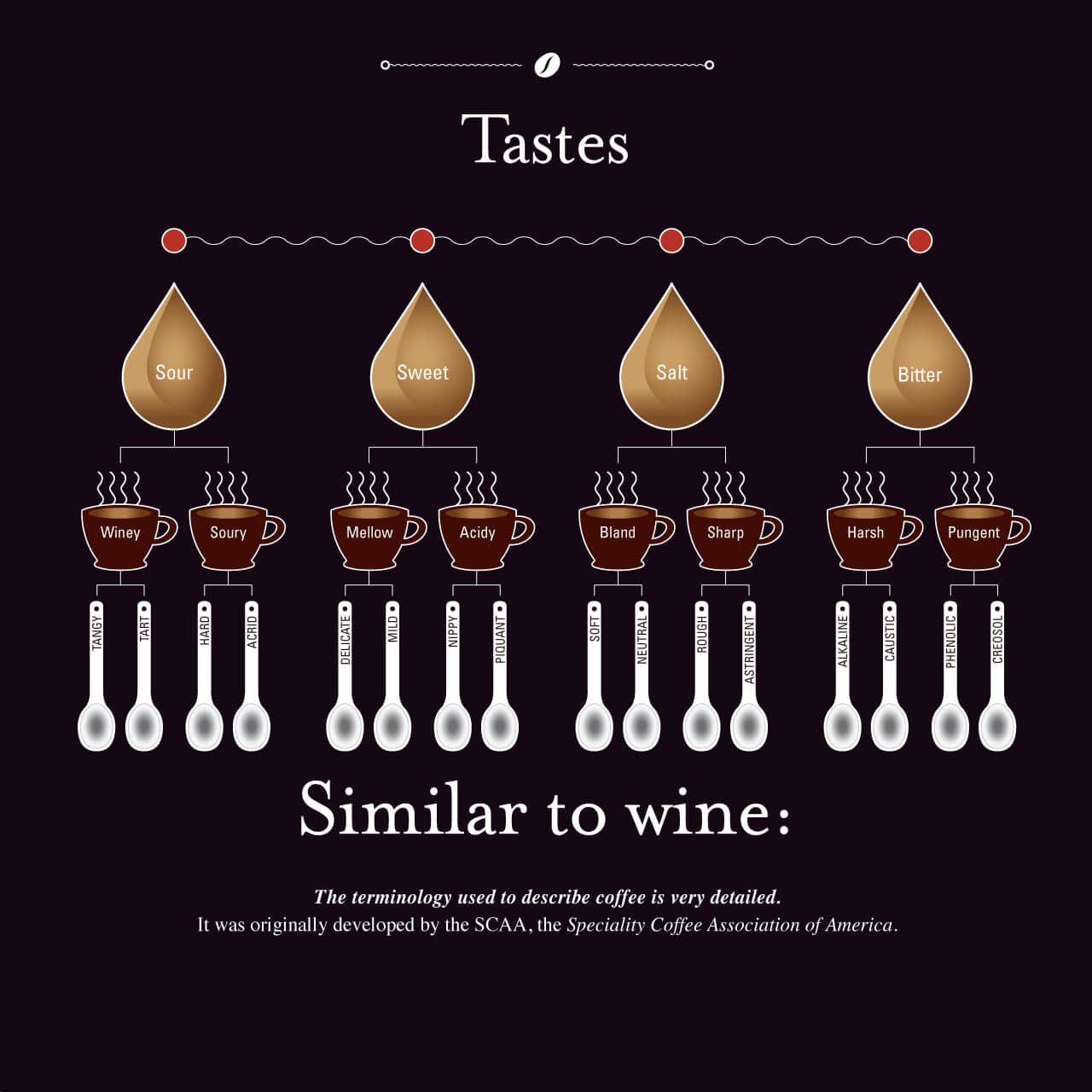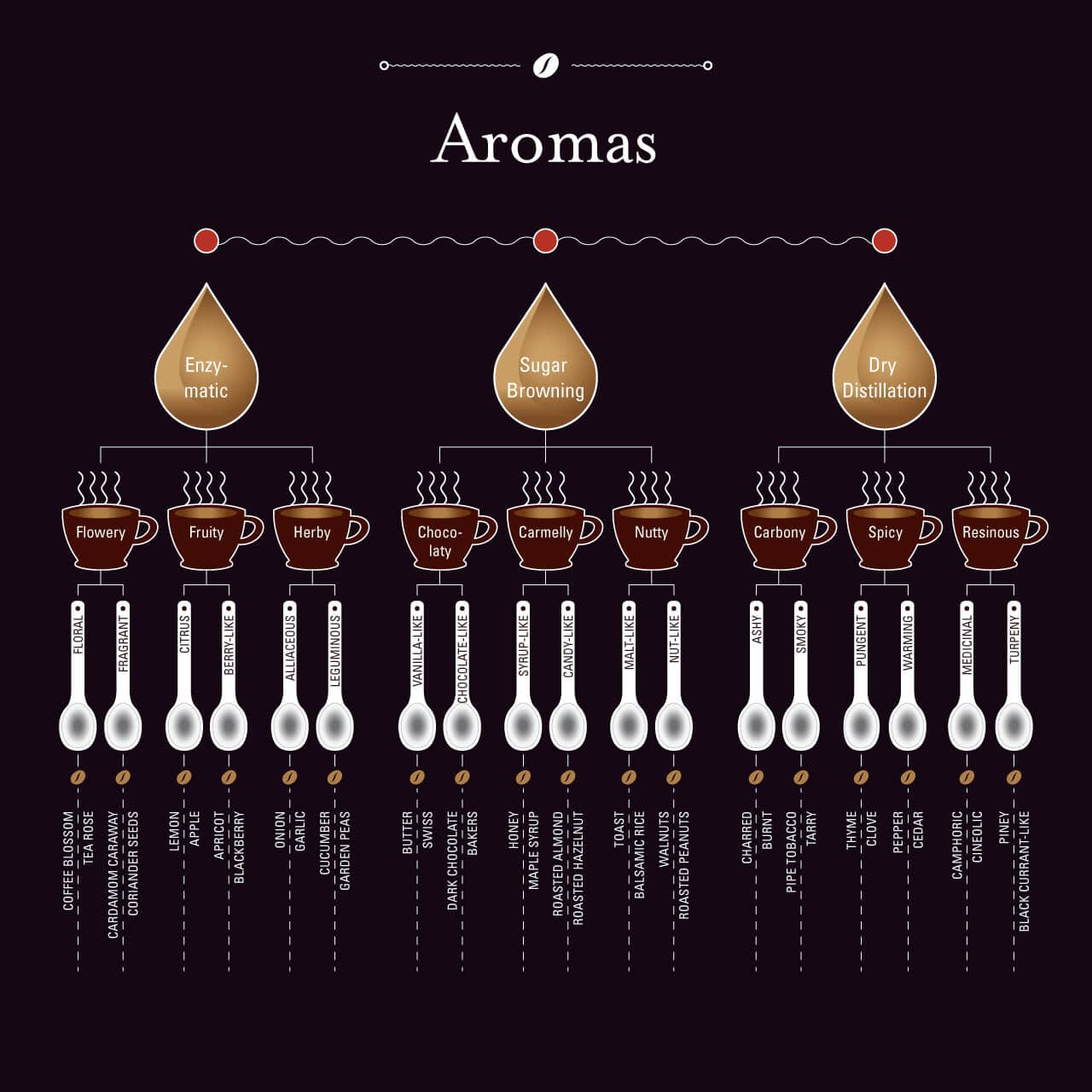- Flavors & Co.
Floral? Nutty? Caramel? Resinous?
Can coffee really taste like that? It can. Because with over 800 aromas, it’s one of nature’s most complex products.

Barbara Beiertz
A quick comparison:
Wine “only” has 400 aromas. In contrast, however, it’s usually only professionals who describe coffee using flowery attributes like dark chocolate, toasted almonds, tea rose, succulent fruits of the forest and so on.
The main influences on a coffee’s aroma are coffee variety, country of origin, cultivation area including the terroir/soil conditions and climate, type of cultivation (organic or conventional), harvesting procedure, processing and method of preparation including grind size and water hardness. In other words, everything. Of course, the roasting process always has the final say.
According to the SCCA, there are three main categories of coffee aroma: “light roast” (enzymatic), “medium roast” (sugar browning) and “dark roast” (dry distillation). The light roasts create more fruity, herb-like and floral aromas, giving the coffee a fruity, acidic taste. Medium roasts conjure nutty, caramel and chocolaty aromas. And dark roasts are spicy, smoky and resinous, rendering a sweet, yet strong flavor.
Take a look at the overview in the diagram. And then savor your coffee in all its glory (ideally without milk).
Coffee is poetry, after all.




